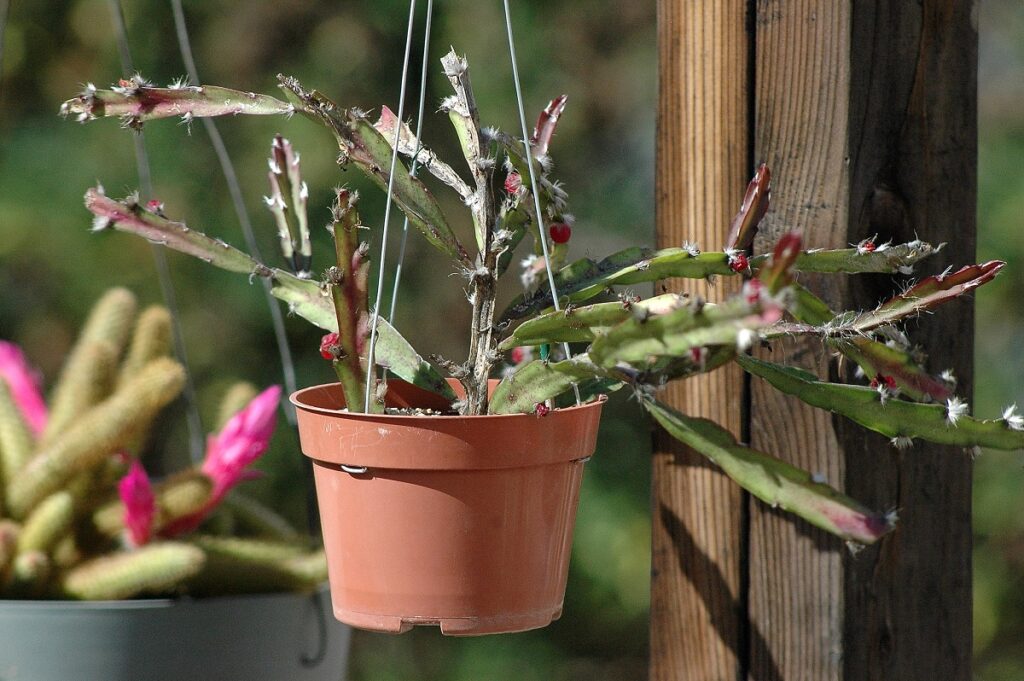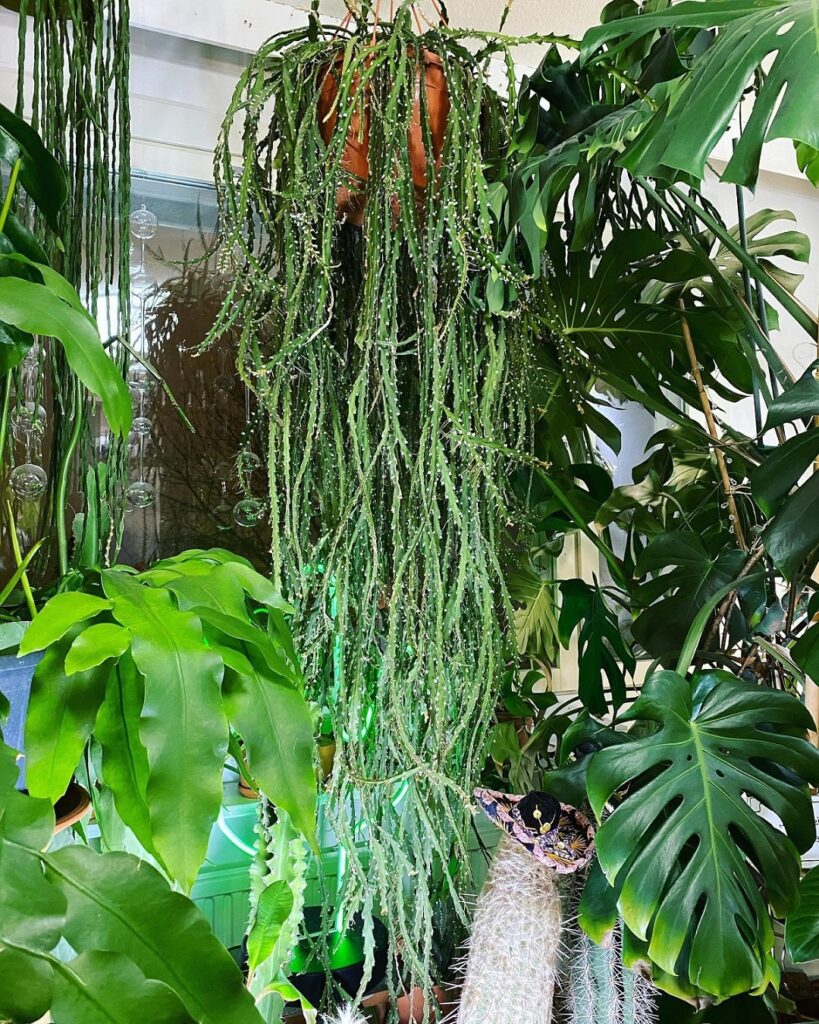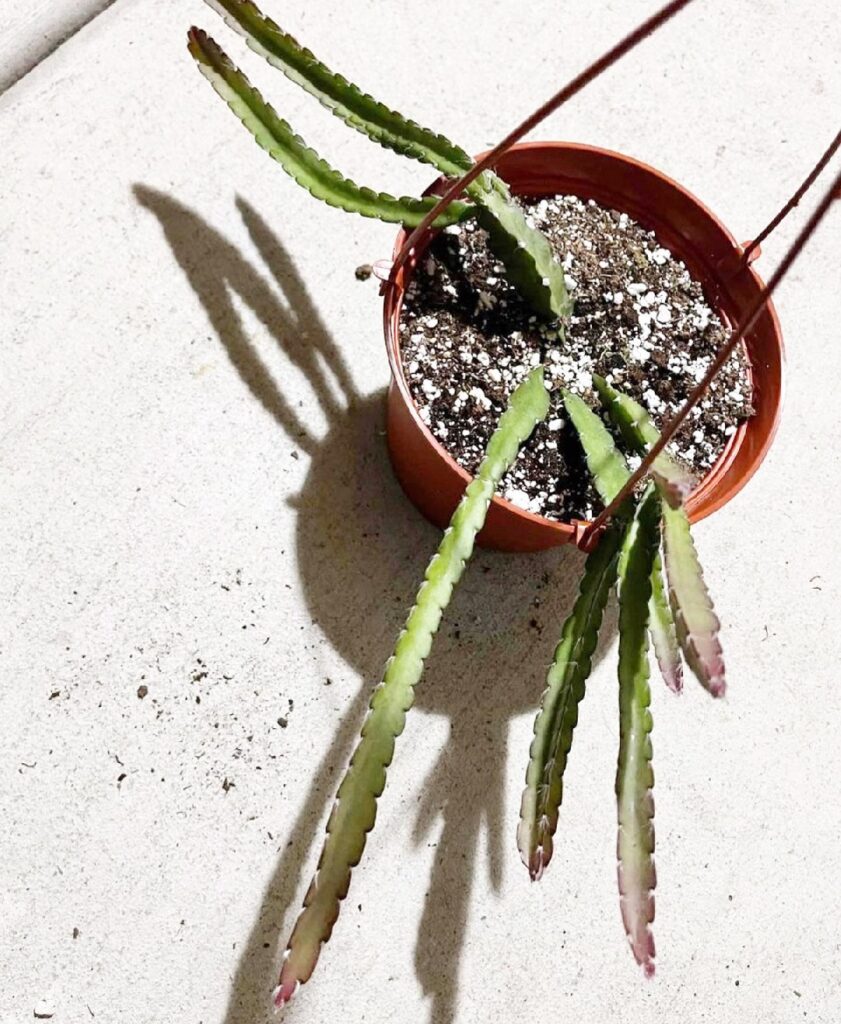Rhipsalis cruciforme: The Scalloped Stem Stunner You Need to See
If you’re a plant lover seeking something truly unique, look no further than the Rhipsalis cruciforme. This captivating cactus is about to become your new obsession, with its mind-blowing appearance and easy-care nature. Prepare to be stunned by its scalloped stems and extraordinary features!

Contents
About Rhipsalis cruciforme
Scientifically known as Lepismium cruciforme, this much-branched cactus hails from Brazil, Paraguay, and Argentina. In its natural habitat, it grows on coastal rocks and thrives as an epiphyte in seasonal forests.
The real showstopper? Those long segmented stems with scalloped edges lined with tufts of soft, white hairs (but no spines!). The thick, fleshy segments can reach up to an impressive 20 inches long and 3 inches wide. But the real party trick? These stems can flaunt shades of green infused with a vibrant purple hue, sometimes even turning a deep maroon when basking in full sun.
Come late winter and early spring, this plant puts on a delicate floral display, with 2 to 5 tiny blooms per areole. These petite flowers range from creamy white and sunny yellow to blushing pinks – and if you’re really lucky, you might even spot a rare magenta bloom! After the flowers fade, translucent purplish-red fruits appear, housing light brown to black seeds inside.
Related Post:
16 Rhipsalis Types (With Pictures)
How To Care For Rhipsalis Cruciforme
Now that you’re smitten with this plant’s good looks, let’s dive into how to keep it thriving in your home or garden!
Light
While it loves bright, indirect light, the Rhipsalis cruciforme can’t handle direct, intense sunlight. Too much sun exposure can lead to scorched leaves. If growing indoors, place it at least 20 inches away from windows receiving midday or afternoon sun. For optimal lighting, mimic its natural environment by providing morning sun and filtered afternoon shade. You can also use a grow light to supplement its light needs.

Water
This cactus isn’t drought-resistant, so regular watering is key. However, overwatering can lead to weak stems and root rot. The ideal approach? Allow the soil to dry out slightly between waterings, but never let it become completely bone-dry. During the growing season (spring and summer), water more frequently, reducing the amount in fall and providing just enough to prevent complete dryness in winter. Use lime-free water like rainwater to keep your plant happy.
Soil
Rhipsalis cruciforme thrives in a well-draining soil mix. You can use a commercial cactus/succulent potting mix or create your own blend by combining potting soil with materials like perlite or pumice to improve drainage.
Fertilizer
To encourage blooming, fertilize every two weeks during the growing season with a balanced, water-soluble fertilizer diluted to half strength.
Temperature and Humidity
The Rhipsalis cruciforme is suited for USDA hardiness zones 10a to 11b, where temperatures range from 30°F to 50°F (-1.1°C to 10°C). It cannot tolerate freezing temperatures or survive outdoors in winter. During the colder months, bring your plant indoors and keep it in a bright spot away from drafts. It will appreciate the slightly higher humidity levels found in most homes compared to the dry outdoor air. You can raise humidity further by using a pebble tray or room humidifier if needed. Cut back on watering in winter, providing just enough to prevent the soil from fully drying out.
Pests and Problems
While diseases are rare with proper care, mealybugs can sometimes be an issue, especially in dry conditions. Keep an eye out for white, cotton-like masses and treat infestations promptly with an appropriate insecticide or insecticidal soap.
Pruning
Minimal pruning is required, but you can trim off any damaged or overly long stems to maintain an attractive shape.

Potting and Repotting
These plants have small root systems, so large pots aren’t necessary. Repot every 2-3 years in spring, carefully transferring to a slightly larger container with fresh potting mix.
Rhipsalis cruciforme Propagation
It’s easy to propagate Rhipsalis cruciforme for even more plant joy! Here’s how:
- Take 3-6 inch stem cuttings in spring or summer
- Allow the cut ends to dry for a few days before planting
- Plant cuttings in a well-draining cactus/succulent potting mix
- Water sparingly until new growth appears, indicating rooting has occurred
With its mesmerizing looks and low-maintenance needs, the Rhipsalis cruciforme is a must-have for any plant enthusiast! Bring home this scalloped stem stunner and let its unique beauty brighten up your space.
